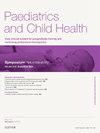A practical approach to high-risk foreign body ingestion in children
Q3 Medicine
引用次数: 0
Abstract
Children commonly present with a history of witnessed or unwitnessed ingested foreign body (FB). Most are low risk objects, with the child or young person remaining asymptomatic enabling management without imaging or intervention. However, there are a several high-risk objects and clinical scenarios where it is important to have high clinical suspicion as they can cause serious injury if they remain in the gastrointestinal tract. Such injuries include oesophageal obstruction, perforation, fistulae into surrounding structures e.g. trachea, blood vessels, and bowel obstruction or perforation and can lead to long term complications or death. Button battery ingestion is particularly dangerous as necrosis, erosion and perforation can occur within hours and even after the battery has been removed, serious complications can still develop days, weeks, or months later. Currently there is not enough research to agree a standard approach following the ingestion of all FBs. This article aims to allow clinicians to follow a standardised approach and enact safe management of ingested FBs in children, whilst avoiding unnecessary investigation or ionising radiation. It includes guidance on which patients can go home safely without investigation or follow-up, which patients require investigations and which patients require emergent or urgent intervention by specialty teams.
儿童高危异物误食的实用方法
儿童通常有目击或未目击的摄入异物史(FB)。大多数是低风险对象,儿童或年轻人仍然无症状,无需成像或干预即可进行管理。然而,在一些高危对象和临床情况下,临床高度怀疑是很重要的,因为如果它们留在胃肠道中,可能会造成严重伤害。这类损伤包括食道梗阻、穿孔、气管、血管等周围结构的瘘管和肠梗阻或穿孔,并可导致长期并发症或死亡。吞下纽扣电池尤其危险,因为几个小时内就会发生坏死、腐蚀和穿孔,甚至在取出电池后,几天、几周或几个月后仍会出现严重的并发症。目前,还没有足够的研究来就摄入所有氟苯后的标准方法达成一致。这篇文章的目的是让临床医生遵循一种标准化的方法,制定儿童摄入的氟化硼的安全管理,同时避免不必要的调查或电离辐射。它包括指导哪些患者可以在没有调查或随访的情况下安全回家,哪些患者需要调查,哪些患者需要由专业团队进行紧急或紧急干预。
本文章由计算机程序翻译,如有差异,请以英文原文为准。
求助全文
约1分钟内获得全文
求助全文
来源期刊

Paediatrics and Child Health (United Kingdom)
Medicine-Pediatrics, Perinatology and Child Health
CiteScore
1.20
自引率
0.00%
发文量
70
 求助内容:
求助内容: 应助结果提醒方式:
应助结果提醒方式:


